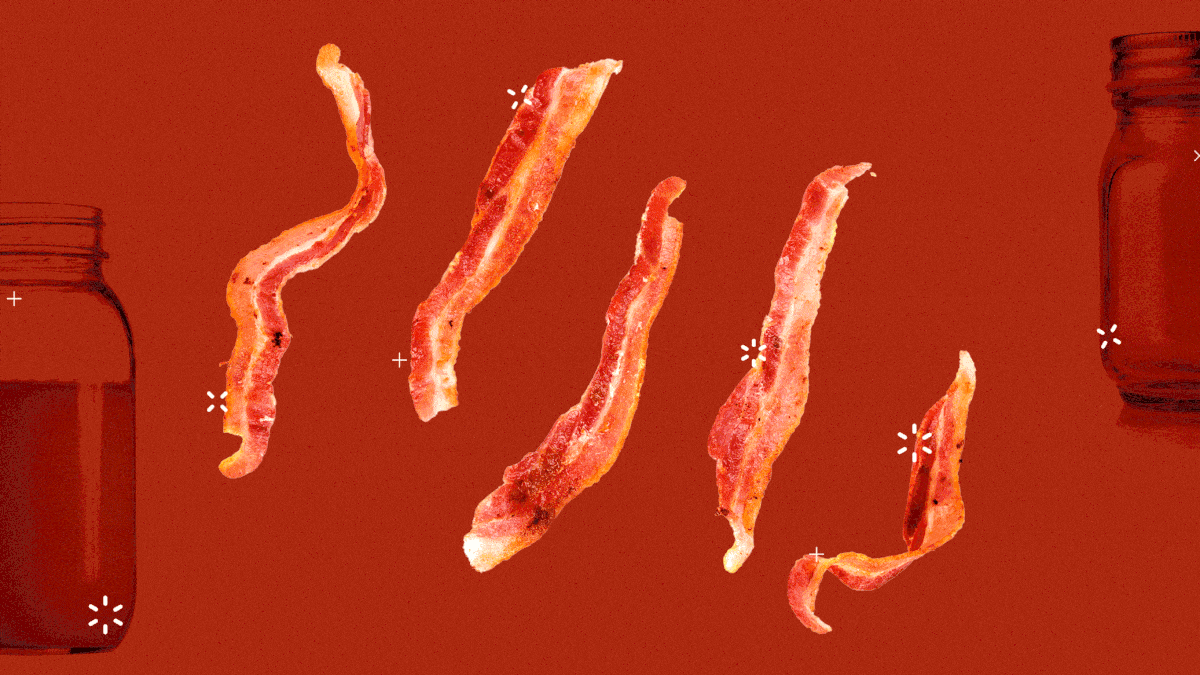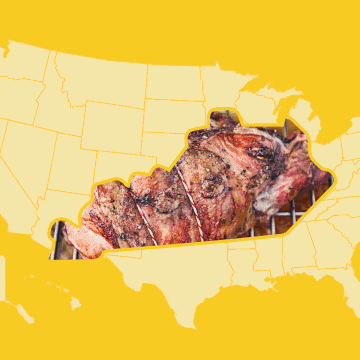Sunday-morning breakfasts were a hallmark of my childhood. I'd wake up to the floating aromas of bread toasting and the bacon sizzling on the griddle. My favorite part, however, was always the eggs. My dad’s stroke of genius was cooking them in leftover bacon fat. The whites would crackle and quickly spread into tentacles as the golden yolk gently bounced before settling in place. And in just a few minutes on the griddle, the eggs would soak up the bacon fat's rich, smoky goodness.
Today, as an avid home cook, I use bacon fat often. Whenever I cook up a pound of bacon, I always fill a cleaned-out pickle or olive jar with the leftover golden liquid. It solidifies into a soft, creamy mass with tiny brown flecks. My fridge has a collection of bacon-fat-filled jars of varying shapes and sizes, like an old-timey apothecary. I’ll add a scoop of it to roasted brussels sprouts, or use it instead of olive oil when sautéing onions and garlic for tomato sauce. If I’m really feeling crazy, I’ll make salad dressing with it.
But whenever I use bacon fat to cook for other people, I always get the same response: That’s amazing, but sooo unhealthy. And I get it. Historically, bacon has been associated with a bad diet. It’s a processed food that's high in saturated fats, and eating too much of it can increase the risk of heart disease.
We aren’t talking about bacon itself, though. We're talking about bacon fat, or grease (and sure, the word grease inherently sounds unhealthy). I never use more than a tablespoon or two, so could it really be that much worse for you than other cooking oils, like olive or canola oil?
I asked Kelly Quinn, MS RDN, and lecturer at Cornell University’s Division of Nutritional Sciences. “Bacon fat has many similarities, nutritionally speaking, to other oils, despite its bad reputation,” she told me. “It has similar calorie and fat content, 40 calories and 5 gram of fat per teaspoon.”
She explained the reasons why bacon fat has a bad rap. “Nitrates and sodium are two ‘nutrients of concern’ in bacon, which can lead to guilt by association for bacon fat,” she said. High heat can cause nitrates to form carcinogens, which can cause cancer. Bacon is very salty, and too much salt in one's diet can lead to increased blood pressure. But bacon fat is not high in sodium. Quinn said the sodium levels in bacon fat are "negligible, 6 milligrams per teaspoon, and recently, food manufacturers have made nitrate-free bacon available."
So a lot of the unhealthy stuff associated with bacon isn't necessarily in bacon fat. And surprisingly, it does has some healthy qualities. Like canola and olive oil, bacon fat is high in oleic acid, which is thought to reduce inflammation and cholesterol levels, Quinn said.
Also, bacon fat simply tastes great. It’s like this magic liquid that will make any veggie dish transform from boring to rich and delicious. “I likely can’t become friends with anyone who uses bacon but not the bacon fat,” said June Xie, senior food producer. She uses it to add a flavor punch to chicken parmesan pasta, chicken chowder stuffed zucchini, and split pea and ham soup. “It’s a perfectly good cooking oil, comes pre-seasoned with salt and smoky flavors, and adds dimension to anything you’re cooking,” she said.
Our senior designer Sarah Ceniceros uses it to cook chicken breasts. “It is the easiest, most delicious seasoning ever,” she said. And our food editor Brooke Caison takes after her dad and keeps a ceramic container of it next to the stove. She especially likes it for frying potatoes, she said, because “they suck up all the bacon-y flavor."
While some cooking oils can get expensive (I’m looking at you, avocado oil), bacon fat is the waste from cooking bacon, so it’s more or less free. It’s the best waste I’ve ever tasted. So the next time you’re looking to add a little extra flavor to a dish, turn to healthy(ish), flavor-packed, and basically free bacon fat.












